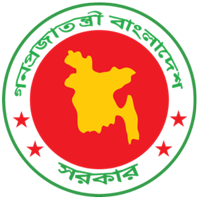Present situation of scheduled vaccines for children

In 1985, the Expanded Program on Immunisation covered 2 percent of infants under one year of age (EPI). It now stands at 81 percent. In the public and private sectors alike, foreign vaccines are administered. Despite having an 81 percent success rate, the EPI program still does not cover 19 percent of the population. This is due to a lack of knowledge.
It is said that 19 percent are opting out of vaccination. They are people from remote areas. Due to the lack of publicity campaigns and awareness, many types of vaccinations that are available for free have also remained out of the public’s knowledge. However, if the vaccination is taken at the right time, the risk of children getting affected by several diseases can be prevented. Even if they are affected, it is possible to reduce its severity. And along with the government, private organisations should come forward to create public awareness on these issues.
Among the vaccines for children, the BCG vaccine for tuberculosis should be given immediately after birth. After 6 weeks, 10 weeks and 18 weeks the remaining dose should be given. The first dose of Measles and Rubella should be given on completion of 9 months and the second dose after completion of 15 months. From birth to 15 months, the child needs to be taken to the vaccination center at least five times in total.
According to Health Department sources, the Expanded Program on Immunisation (EPI) started in Bangladesh on April 7, 1979. Then the 1985 survey found that only 2 percent of children under 1 year of age were fully vaccinated. At that time only upazila health complexes and big hospitals were giving vaccination. In the next 5 years, a massive expansion of the program and an intensive immunisation program were implemented.
By 1990, 60 percent of children were vaccinated. The World Health Organisation, UNICEF, CDC, CVP/PATH, and USAID then jointly launched an initiative—known as the “Reach Every District” or RED Strategy—to address the causes of non-vaccination on time. In 2003, the government added hepatitis B vaccination to the program and introduced AD syringes. In 2009, measles rubella (MR) vaccine and 2nd dose of MR vaccine at 15 months were replaced by Hib pentavalent nationwide and since 2012 measles vaccine given at 9 months of age. In 2015, pneumococcal conjugate vaccine (PCV) and IPV vaccines were added. Also, since 2017, fractional IPV vaccination has been added across the country.
According to the 2016 survey, the rate of fully immunised children within 1 year was 82.3 percent. However, the BCG vaccination rate was 99.3 percent. In 2018, 85 percent of children are targeted for immunisation. According to sources, children are being immunised against 10 deadly diseases such as diphtheria, whooping cough, tuberculosis, polio, measles, rubella, haemophilus, influenza-B, hepatitis B and pneumonia under the expanded immunisation programme. These vaccinations are given to children in educational institutions, routine immunisation centers, permanent immunisation centers.
Apart from the officials and employees of the EPI program of the Health Department, volunteers search for and vaccinate children in various missed communities in order to bring them under vaccination; prominently railway stations, launch terminals, various factories, hospitalised children, children staying with their mothers in jails, red-districts, refineries, slum areas.









